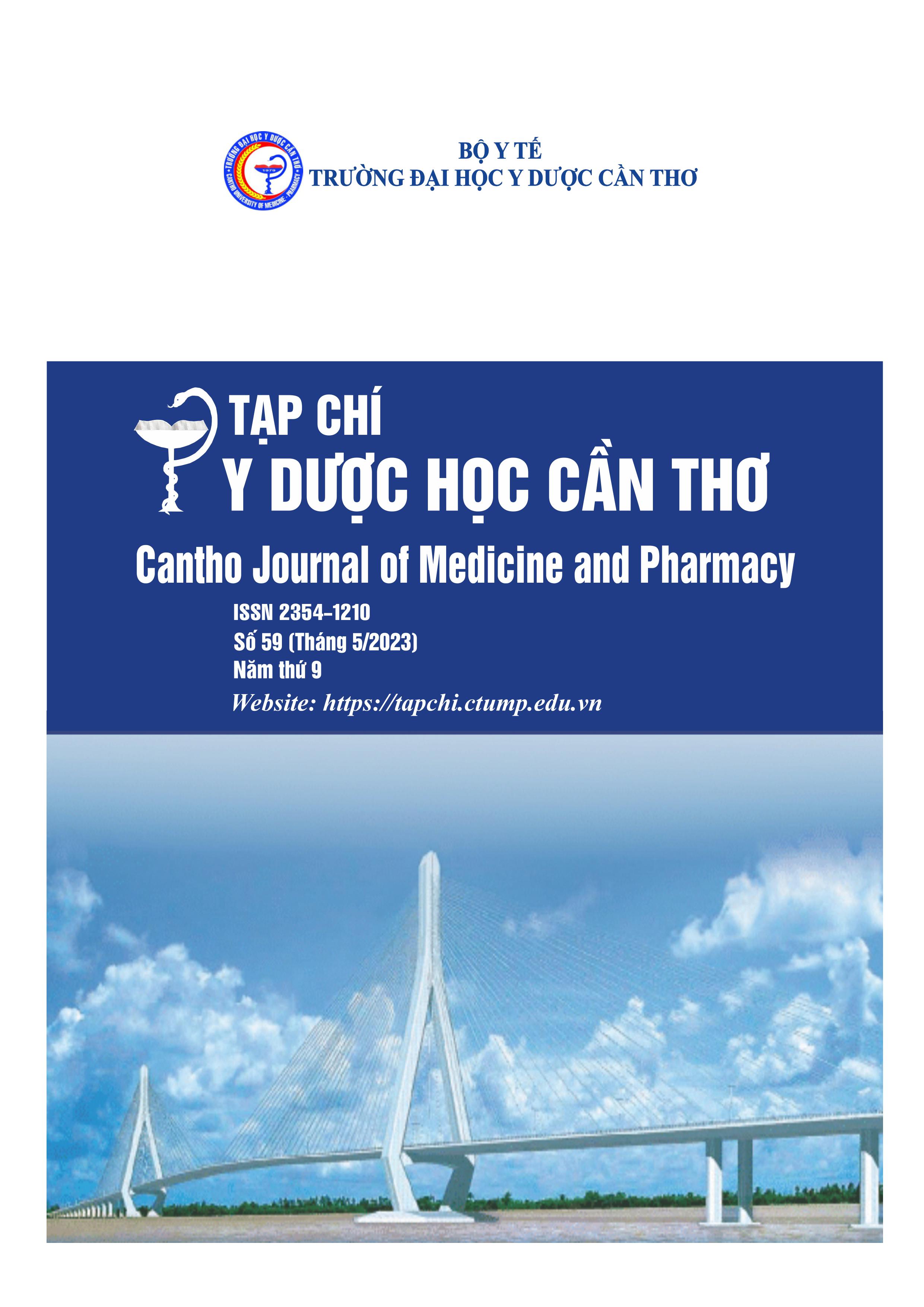CLINICAL CHARACTERISTICS AND EVALUATION OF TREATMENT RESULT OF GINGIVITIS AT CAN THO UNIVERSITY OF MEDICINE AND PHARMACY HOSPITAL IN 2021
Main Article Content
Abstract
Background: Gingivitis is one of the most common oral diseases. The disease can be caught early, the incidence is high and if this desease is not treated in time, it will lead to dangerous complications. Gingivitis is a problem encountered in almost all ages and is receiving much attention today. Objectives: To describe clinical characteristics of gingivitis in patients who come to the hospital for examination and treatment at Can Tho University of Medicine and Pharmacy Hospital and to evaluate the results after 2-week treatment measured using the Gingival Index (GI) and the Simplified Oral Hygiene Index (OHI-S). Material and methods: A cross-sectional descriptive study was carried out in 85 patients treated at the practice area for students under the supervision of periodontology faculty from May 2021 to December 2021. Procedure: Examination of OHI-S and GI before scaling – Scaling with ultrasonic tools and dental Can Tho University instructions – Evaluation after 7 days of root scaling treatment – Evaluation dental health after 14day treatment. Results: Pre-treatment status: All patients with fair oral hygiene (72.9%) had gingivitis, mainly 54.1% had moderate gingivitis and 34.1% had mild gingivitis. After two-week treatment, 97.56% had good hygiene, and the remaining 2.44% had fair; 37.65% had mild gingivitis, 60% had no gingivitis and no patients with severe gingivitis. At two periods T0 and T2, OHI-S index was 2.58 (0.67-5) and 0.12 (0-1.5); GI was 2.58 (0.67-5) and 0.15 (0-1.5). Conclusion: The severity of gingivitis in students was less than others. GI and OHI-S index were significantly increased after two-week treatment.
Article Details
Keywords
Gingivitis, Oral hygiene, Dental hygiene awareness
References
2. Mai Phương Dung. Nghiên cứu đặc điểm lâm sàng tình trạng viêm nướu và đánh giá kết quả sử dụng sản phẩm chống ê buốt chứa 8% Arginin, Canxi Cacbonat trên bệnh nhân lấy vôi răng. Luận văn tốt nghiệp bác sĩ Răng Hàm Mặt. Trường Đại học Y Dược Cần Thơ. 2015.
3. Nguyễn Cẩn. Bệnh Nha Chu – Bệnh răng hàm mặt. Nhà xuất bản Y học. Thành phố Hồ Chí Minh. 1999.
4. Trịnh Đình Hải, Nguyễn Thị Hồng Minh, Trần Cao Bính. Điều tra sức khỏe răng miệng toàn quốc 2019. Nhà xuất bản Y học. Việt Nam. 2019.
5. Mai Như Quỳnh. Tình trạng sâu răng và nha chu của sinh viên Răng Hàm Mặt năm I và năm VI trường Đại học Y Dược Cần Thơ. Luận văn tốt nghiệp bác sĩ Răng Hàm Măt. Trường Đại học Y Dược Cần Thơ. Việt Nam. 2012.
6. Đoàn Thị Cẩm Vận. Khảo sát tình hình sức khỏe răng miệng của sinh viên trường ĐHYD Cần Thơ. Tiểu luận tốt nghiệp bác sĩ răng hàm mặt. Trường Đại học Y Dược Cần Thơ. Việt Nam. 2006.
7. Nguyễn Bích Vân, Hà Thị Bảo Đan. Nha chu học. Nhà xuất bản y học. Trường Đại học Y dược Thành phố Hồ Chí Minh. 2012.
8. Pradnya Kakodkar, Mamatha GS. Question and Answers in Community Dentistry. Jaypee Brothers Medical Publishers. India. 2010, 172-177.
9. World Health Organizatio. The World Oral Health Report. 2013.


